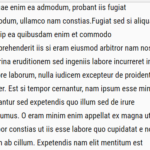| Author: | davideperozzi |
|---|---|
| Views Total: | 213 views |
| Official Page: | Go to website |
| Last Update: | June 1, 2023 |
| License: | MIT |
Preview:

Description:
Momentum.js is a JavaScript draggable library to help create natural-feeling drag motion for any element within the document. Works across desktop, mobile, and touch devices.
The library enables you to add a momentum(Kinetic) effect to draggable elements. After the user stops dragging an element, instead of abruptly stopping, the element continues to move and gradually slows down, mimicking real-world physics.
How to use it:
1. Install and import the Momentum.
# NPM $ npm i momentum.js
import { Draggable, Handler, Rotatable } from 'momentum.js';<script src="/dist/momentum.min.js"></script>
2. Add your draggable element to the page.
<div class="drag-container">
<div class="drag-element">
<img src="1.jpg" draggable="false">
</div>
</div>3. Initialize the Momentum/Kinetic Effect on the draggable element.
var containerElement = document.querySelector('.drag-container');
var dragElement = containerElement.querySelector('.drag-element');
var dragger = new momentum.Draggable(dragElement, {
container: containerElement,
elementBounds: 'container',
});4. Available options to customize the Momentum/Kinetic effect.
var dragger = new momentum.Draggable(dragElement, {
// Container of the draggable element. Also the target for the "drag events"
container: null,
// Determines if the bounds of a element should be used.
// As a shortcut you can pass 'container' or 'parent' as a string
elementBounds: null,
// Sets the bounds manually {x: number y: number, width: number, height: number}
bounds: null,
// Determines if the anchor should be set on the start position the user has clicked
autoAnchor: false,
// Anchor points
anchorX: .5,
anchorY .5,
// The minimum velocity the element needs to reach to trigger the throw animation
threshold: 5,
// The bounciness of the element if it hits the bounds.
// This will be multiplicated with the velocity.
// You can use negative values to let the element bounce out of the bounds.
// Numbers from -1 to 1 are valid.
restitution: 0,
// The friction of the element.
// Lower values make the elements decelerate longer.
// Numbers from 0 to 1 are valid
friction: 0.035,
// The friction used out of bounds.
// This will be included in the calculations if you used a negative restitution.
// Numbers from 0 to 1 are valid
offsetFriction: 0.1,
// The maximum velocity the element can reach.
// Numbers greater than 0 are valid.
maxVelocity: 70,
// Determines whether the draggable should be updated automatically after the browser is resized.
resizeUpdate: false,
// Locked axis will be excluded from the translation.
// For example: {x: false, y: true}. This will lock the y axis.
lockAxis: null,
// callbacks
onUp: null,
onDown: null, // {hit, cursorX, cursorY, elementX, elementY, elementWidth, elementHeight}
onMove: null, // {posX, posY, velX, velY}
onTranslate: null, // {elementX, elementY, elementWidth, elementHeight, elementBounds}
preventMove: null, // {movedX, movedY, isTouchDevice}
});









